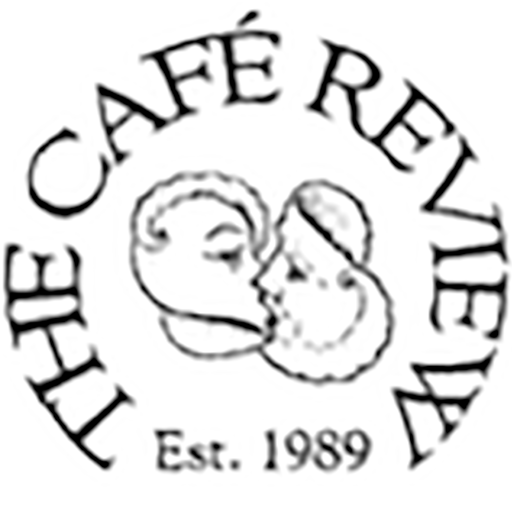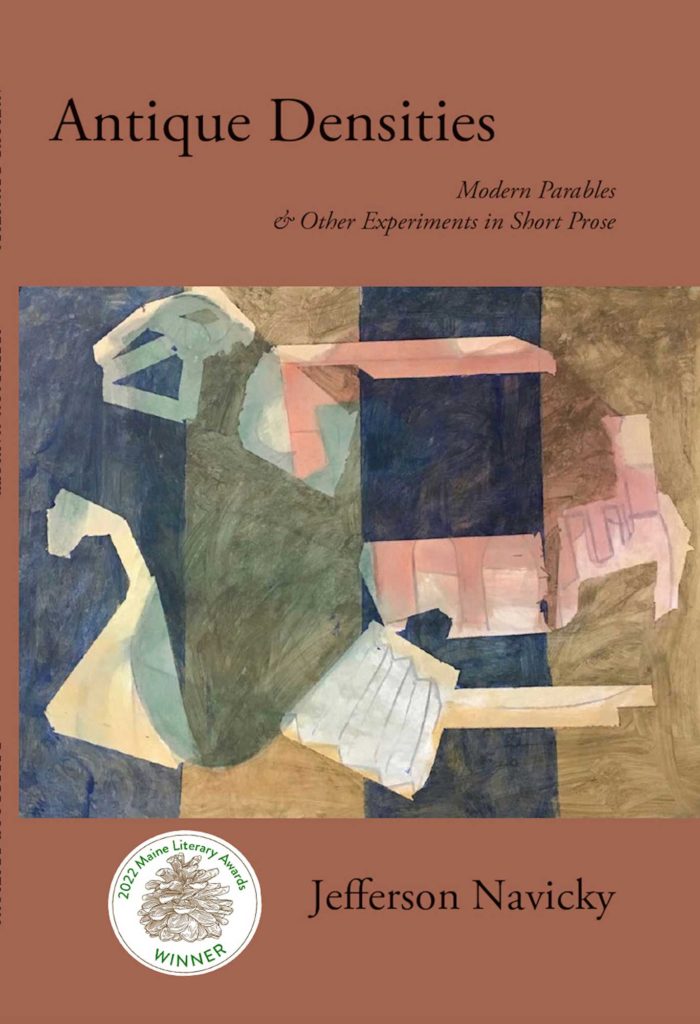Antique Densities: Modern Parables & Other Experiments in Short Prose
Antique Densities: Modern Parables & Other Experiments in Short Prose
by Jefferson Navicky.
Deerbrook Editions, 2021
106 pages, paper, $18.50
ISBN: 9781736847725
Imagine trees spiraling sap inside book jackets, a forest thriving through your palm of paper. Antique Densities questions our answers, stripping down the logic in our lives. Are we the spines of stories, or are stories the spines of us? If you had little doubt about existence before, Jefferson Navicky’s archive of broken rules and shoulder–stretching metaphors will increase that uncertainty even more, in the most clever ways possible. With prose poems reinventing persona poetry, the hero’s journey, and objects as muse, Navicky reminds us that disappearance doesn’t always prove fatal; once–dismissed fantasies can actually be both explosive and hopeful.
Navicky’s rich unknowing halts time. After all, he was inspired by a book called Tales of Wisdom: 100 Modern Parables, which he found at twenty–two years old in New York City. Through sections titled “Books,” “Maps,” “City Directories,” “Transcripts of Oral History,” and “Special Collections,” the past and the future shake covers off the present, “creating echoes whose souls excited the hollow places of the house.” What would these rooms of language look like unconfined, our stories bound within breasts of birds? Navicky carves space into systems of everyday order, like a “grandfather clock where we make love, wedged between the huge hanging pendulum.”
We enter every paragraph with a new body: “You do not know if the train is in front of you, but you feel relief in knowing you are writing.” Through a variety of speakers — a barber, police officer, lover as thief, visitor’s book, boy dressed in his first words, mayor who wears snowshoes around the office, and even a hunched man — Navicky redresses solitude as creative inquiry. We’re driven to examine the peculiar in the familiar down to the very last drop. Through a single malt scotch on the rocks, a squinting dog on the floor of a café, or even a map that’s rescued and reused as a letter to a brother, Navicky teaches us to carry an abundance of lives within our own metamorphic retelling. “A rib cage floats in the air” is a perfect example of the uncontained and ever–changing physicality in this book. Navicky portrays humans as earth, paper, and history, unable to tell “what was at the heart beating beneath the wings. Was it knowledge or was it pain?” Antique Densities allows settling in the unsettling, how we can feel language with all our senses but still never be able to explain an experience. Navicky describes a book as “the moment he learned to touch” with “paper and skin flapping together,” showing the minute line between book and body. Ultimately, Navicky embraces the “twinned movements of language and fragility turning into each other,” furthering untranslatable landscapes of emotion rather than ones of theory.
With close attention to oral histories and faults of memory, Navicky’s work invites us to vulnerably enter new rooms of self–recognition while speaking to human limitations. We can never read everything; we often stare at screens to ingest two seconds of a story. Navicky poses: What if we started seeing books on the floor as casualties? What if all we altered of the natural world were our dreams, fossilized in mountain sides without ownership? By paradoxically placing enduring language inside ephemerality, Navicky welcomes return, suffering, expansive holding, and an unrealized freedom surviving any sticky shelf life:
“This was not our library. We walked through a hole in the
brick wall out
onto the street. A bus passed us. Our beginnings were
everywhere.”
— Amanda Dettmann


